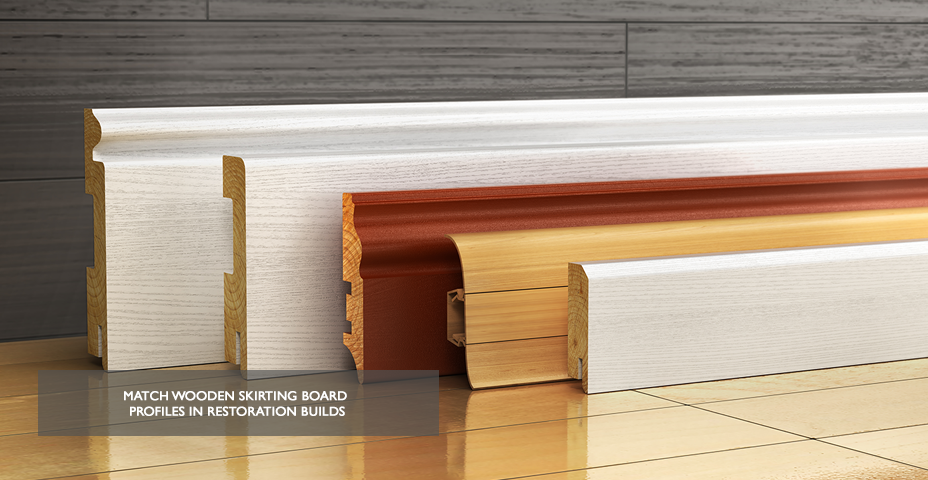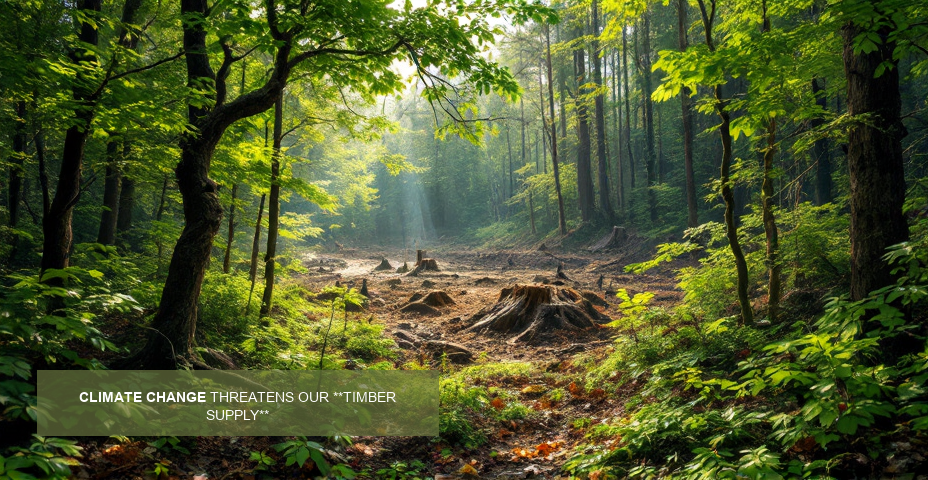When timber is used in outdoor applications, it undergoes a remarkable transformation over time. The rich, vibrant colours that make wood so appealing when first installed gradually change as the material interacts with sunlight, rain, and other environmental factors. This natural timber colour change is an important consideration for anyone planning exterior joinery projects, as the aesthetic evolution can dramatically alter the appearance of structures and features.
Understanding how weathering effects on timber influence its appearance allows for more informed material selection and maintenance planning. Different wood species respond uniquely to outdoor exposure - some develop an attractive silver-grey patina, while others may darken or take on uneven tones. Throughout this article, we will examine various timber types commonly used in exterior applications, from hardwoods like oak and iroko to softwoods such as cedar and pine. We will explore how each responds to weathering, which varieties maintain their colour best, and the scientific processes behind these transformations.
The Science Behind Timber Colour Change
When timber is exposed to the elements, complex chemical processes begin to alter its appearance. At the heart of this transformation is lignin, a natural polymer that helps give wood its strength and colour. When lignin breaks down due to weathering, it fundamentally changes the timber's appearance.
This breakdown occurs as oxygen in the atmosphere reacts with lignin molecules, causing oxidation. The process gradually removes the lignin from the surface layers of the wood, leaving behind primarily cellulose fibres which have a lighter, greyer appearance. Different wood species contain varying amounts of lignin and other extractives, which explains why some timbers change colour more dramatically than others when exposed to weather.
UV Radiation and Its Effects on Wood
Ultraviolet (UV) radiation from sunlight is perhaps the most significant factor in timber colour change. UV rays penetrate the surface of the wood and break chemical bonds in lignin and other wood components. This photodegradation process causes most woods to initially darken and then gradually lighten and grey over time.
The rate at which UV affects timber varies significantly by species. Woods with higher natural oil content or more dense cellular structure may resist UV degradation longer. However, all untreated timbers will eventually respond to UV exposure, though the timeline can range from months to years depending on exposure intensity and the specific timber species.
How Moisture Affects Timber Appearance
While UV radiation initiates colour change, moisture accelerates and amplifies the process. Rain, humidity, and general dampness work to leach out the degraded lignin components after UV has broken them down. This washing away of compounds reveals more of the cellulose structure beneath, contributing to the silvery-grey patina that many weathered timbers develop.
Cycles of wetting and drying create additional stress on timber surfaces, causing microscopic cracks that can trap dirt and encourage mould growth, further altering the wood colour. In consistently damp environments, some timbers may develop darker tones or even blackish discolouration due to fungal activity, while in dry, sunny locations, the same wood might develop a lighter, bleached appearance.
Common Timbers for Outdoor Use and Their Colour Changes
Oak begins with a golden-brown tone that gradually weathers to a silvery-grey appearance when left untreated outdoors. This transformation typically begins within the first few months of exposure and continues over several years. The high tannin content in oak can sometimes lead to black spotting when in contact with iron or steel fixings.
Nature's Palette: Timber's Evolving Beauty
Exposure to sun, rain, and air transforms timber's appearance over time. While cedar silvers gracefully and teak develops a distinguished patina, oak darkens dramatically. These natural color shifts—influenced by climate, wood species, and exposure—create unique character that many designers now deliberately incorporate into architectural plans.
Teak starts with a warm honey-brown colour and naturally weathers to a distinguished silver-grey patina. This timber is highly valued for outdoor applications due to its natural oils that provide exceptional resistance to decay. The colour change in teak is relatively uniform compared to other hardwoods, making it a popular choice for garden furniture and boat decking where consistent weathering is desired.
Softwoods: Appearance Changes Over Time
Western Red Cedar presents initially with rich reddish-brown tones that weather to a soft silver-grey when exposed to the elements. This transformation typically occurs within 6-12 months in full exposure conditions. Cedar is frequently used for cladding and fencing due to its natural resistance to decay and its attractive weathering characteristics.
Pine, when used outdoors, changes from its pale yellowish appearance to a darker grey-brown before eventually turning silver-grey. Without treatment, pine can develop an uneven appearance with darker patches. The sapwood portions are particularly susceptible to colour variation and decay, which is why pressure treatment is often recommended for pine used in external applications such as decking and garden structures.
Exotic Timbers and Their Weathering Properties
Ipe, a Brazilian hardwood, begins with a rich chocolate-brown colour that weathers to a silvery patina similar to teak. The dense grain structure of Ipe means this colour change happens more slowly than with many other timber species, often taking several years to fully develop. The exceptional density of Ipe also contributes to its remarkable durability in outdoor settings.
Cumaru displays golden to reddish-brown tones when freshly installed and weathers to an attractive silver-grey over time. This South American hardwood is known for its excellent weathering properties and resistance to insects. The colour transition is relatively consistent across the timber surface, though some boards may weather at different rates depending on their exposure to sunlight and rainfall.
Factors Influencing the Rate and Type of Timber Weathering
The climate in which timber is installed plays a significant role in how quickly and dramatically its colour will change. In hot, humid tropical regions, timber typically weathers more rapidly due to the combination of intense sunlight, high moisture levels, and increased biological activity. The colour change in these environments often results in a silvery-grey patina developing within months rather than years.
Conversely, in cooler, drier climates, the weathering process tends to be more gradual. Coastal locations present particularly challenging conditions, as the combination of salt spray, strong UV radiation, and frequent moisture can accelerate weathering dramatically. Rainfall patterns and humidity levels are also key determinants, with more frequent wet-dry cycles typically speeding up the weathering process and colour transformation.
Exposure Direction and Intensity
The orientation of timber elements relative to the sun greatly affects how they weather. South-facing timber (in the Northern Hemisphere) or north-facing timber (in the Southern Hemisphere) receives more direct sunlight throughout the year, leading to more pronounced and faster colour changes. These surfaces often develop a deeper grey tone compared to those in shadier positions.
Timber installed under eaves or in partially covered areas may weather unevenly, creating a variegated appearance that some find appealing and others consider unsightly. Vertical surfaces typically weather more slowly than horizontal ones, as they shed water more efficiently and collect less moisture, which is a catalyst for both physical and chemical weathering processes.
Wood Density and Natural Oils
The inherent properties of different timber species significantly influence their resistance to weathering. Dense hardwoods such as ipe, teak, and jarrah generally weather more slowly and maintain their original colour longer than softer woods like pine or cedar. This is because their tight grain structure makes it more difficult for moisture and UV radiation to penetrate deeply.
Timbers with high natural oil content, including teak and ironwood, possess built-in protection against weathering. These oils act as natural preservatives, slowing the breakdown of lignin that causes colour change. The extractives present in certain species can also affect how they weather, with some developing attractive patinas while others may discolour in less appealing ways when their natural compounds react with environmental elements.
Managing and Working with Timber Colour Changes
When planning exterior timber projects, you can incorporate the natural weathering process into your design approach. Intentional weathering involves accepting and even highlighting the gradual colour transformation of timber. For example, western red cedar and oak can be positioned to weather evenly, creating a uniform silver-grey patina that many find aesthetically pleasing.
Some designers deliberately mix weathered and new timber to create visual contrast. This approach works particularly well with species like teak and ipe, where the colour transition becomes part of the evolving design narrative. You might also consider how surrounding elements such as metal fixtures will interact with weathering timber, as some combinations can enhance the natural ageing process.
Protective Treatments and Their Effects
Various sealants and finishes can modify how timber weathers outdoors. UV-resistant clear coatings help preserve the original timber colour by blocking the ultraviolet rays that cause photodegradation. Oil-based products like linseed or tung oil penetrate the wood grain to provide protection while allowing the timber to breathe and develop a more gradual colour change.
Pigmented stains offer another approach, adding colour while providing protection. These range from semi-transparent options that allow some wood grain to show through to solid stains that mask the timber completely. Water-repellent preservatives combined with UV blockers can significantly slow the weathering process for timbers such as pine and spruce that are particularly susceptible to rapid colour change.
Maintenance Strategies for Outdoor Timber
Establishing a regular maintenance schedule is essential for managing timber colour changes. Annual cleaning with appropriate timber cleaners removes dirt, algae, and surface degradation that can lead to uneven weathering. Most exterior timbers benefit from inspection before and after winter to address any issues promptly.
Reapplication of protective finishes should occur based on exposure conditions rather than fixed timeframes. South-facing timber typically requires more frequent treatment than north-facing installations. For valuable hardwoods like mahogany or walnut used in exterior applications, consider a maintenance programme involving gentle cleaning and refreshing protective coatings every 6-12 months to maintain their rich colouration and extend their aesthetic lifespan.
Summary of Embracing the Natural Evolution of Timber
The weathering process transforms timber from its initial appearance into something entirely different yet equally beautiful. Understanding how different timber species respond to weathering is essential when selecting wood for outdoor projects. While some timbers like teak and cedar maintain relative stability with subtle shifts to silver-grey tones, others such as iroko and sapele undergo more dramatic transformations.
When planning outdoor timber installations, consider both the initial appearance and the eventual weathered state. Proper maintenance can moderate colour changes, but embracing the natural patina that develops over time often results in the most authentic and appealing aesthetic. The changing nature of timber is not a flaw but rather a distinctive characteristic that tells the story of time, environment, and natural beauty in your outdoor spaces.





